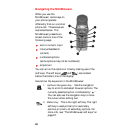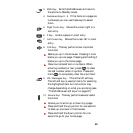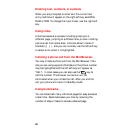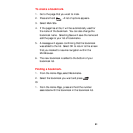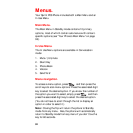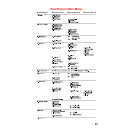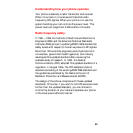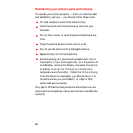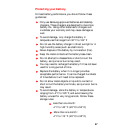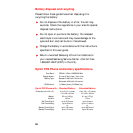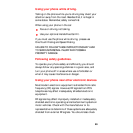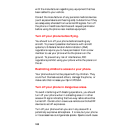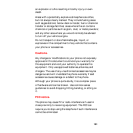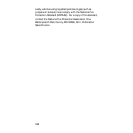95
Understanding how your phone operates.
Your phone is basically a radio transmitter and receiver.
When it’s turned on, it receives and transmits radio
frequency (RF) signals. When your phone is in use, the
system handling your call controls the power level. This
power level can range from 0.006 watts to 0.2 watts.
Radio frequency safety.
In 1991—1992, the Institute of Electrical and Electronics
Engineers (IEEE) and the American National Standards
Institute (ANSI) joined in updating ANSI’s 1982 standard for
safety levels with respect to human exposure to RF signals.
More than 120 scientists, engineers, and physicians from
universities, government health agencies, and industry
developed this updated standard after reviewing the
available body of research. In 1993, the Federal
Communications (FCC) adopted this updated standard in a
regulation. In August 1996, the FCC adopted a hybrid
standard consisting of the existing ANSI/IEEE standard and
the guidelines published by the National Council of
Radiation Protection and Measurements (NCRP).
The design of the phone complies with these updated
standards. Of course, if you want to limit RF exposure even
further than the updated standard, you can choose to
control the duration of your calls and operate your phone
in the most power-efficient manner.




